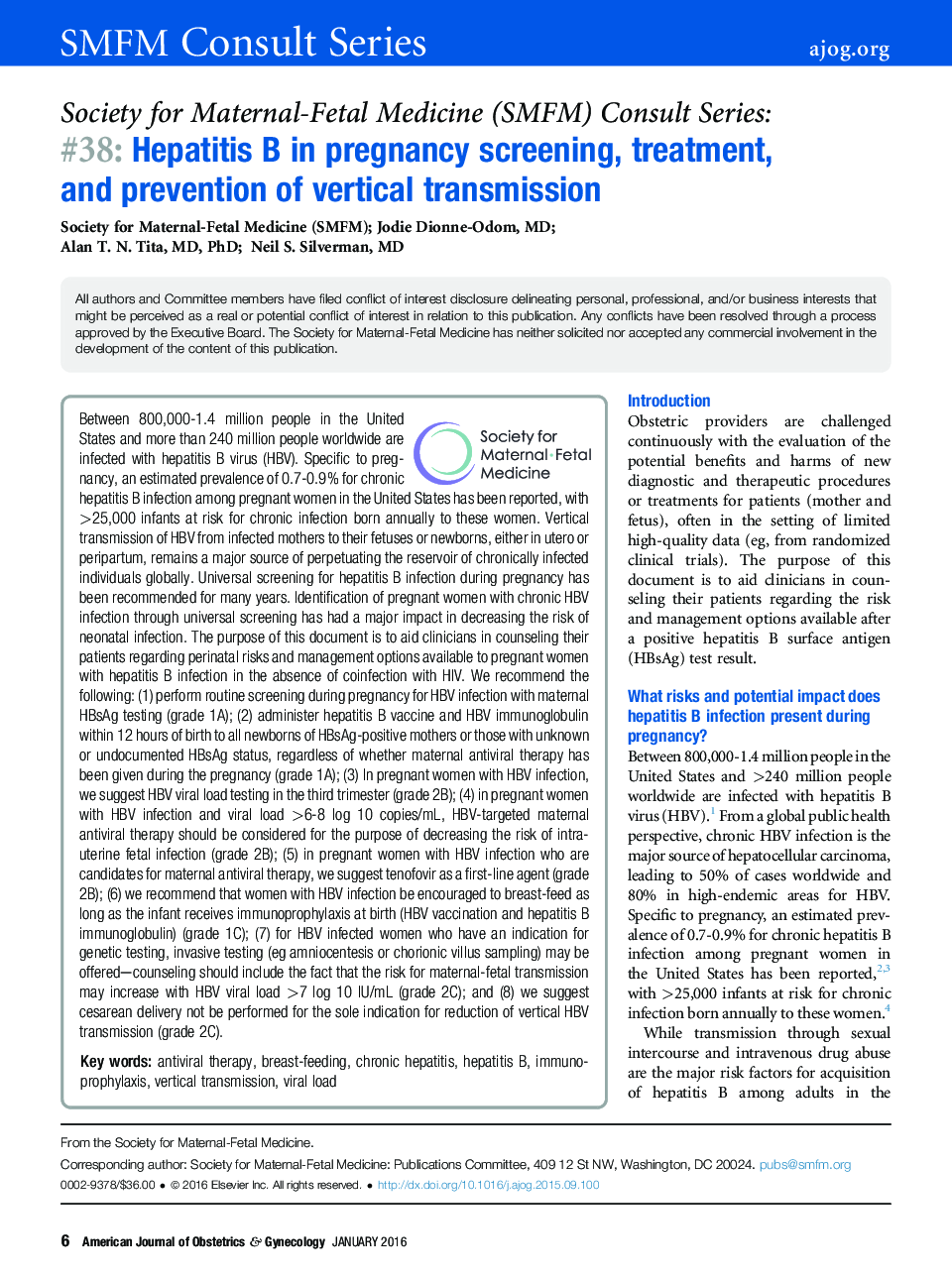| کد مقاله | کد نشریه | سال انتشار | مقاله انگلیسی | نسخه تمام متن |
|---|---|---|---|---|
| 3432297 | 1594896 | 2016 | 9 صفحه PDF | دانلود رایگان |
Between 800,000-1.4 million people in the United States and more than 240 million people worldwide are infected with hepatitis B virus (HBV). Specific to pregnancy, an estimated prevalence of 0.7-0.9% for chronic hepatitis B infection among pregnant women in the United States has been reported, with >25,000 infants at risk for chronic infection born annually to these women. Vertical transmission of HBV from infected mothers to their fetuses or newborns, either in utero or peripartum, remains a major source of perpetuating the reservoir of chronically infected individuals globally. Universal screening for hepatitis B infection during pregnancy has been recommended for many years. Identification of pregnant women with chronic HBV infection through universal screening has had a major impact in decreasing the risk of neonatal infection. The purpose of this document is to aid clinicians in counseling their patients regarding perinatal risks and management options available to pregnant women with hepatitis B infection in the absence of coinfection with HIV. We recommend the following: (1) perform routine screening during pregnancy for HBV infection with maternal HBsAg testing (grade 1A); (2) administer hepatitis B vaccine and HBV immunoglobulin within 12 hours of birth to all newborns of HBsAg-positive mothers or those with unknown or undocumented HBsAg status, regardless of whether maternal antiviral therapy has been given during the pregnancy (grade 1A); (3) In pregnant women with HBV infection, we suggest HBV viral load testing in the third trimester (grade 2B); (4) in pregnant women with HBV infection and viral load >6-8 log 10 copies/mL, HBV-targeted maternal antiviral therapy should be considered for the purpose of decreasing the risk of intrauterine fetal infection (grade 2B); (5) in pregnant women with HBV infection who are candidates for maternal antiviral therapy, we suggest tenofovir as a first-line agent (grade 2B); (6) we recommend that women with HBV infection be encouraged to breast-feed as long as the infant receives immunoprophylaxis at birth (HBV vaccination and hepatitis B immunoglobulin) (grade 1C); (7) for HBV infected women who have an indication for genetic testing, invasive testing (eg amniocentesis or chorionic villus sampling) may be offered–counseling should include the fact that the risk for maternal-fetal transmission may increase with HBV viral load >7 log 10 IU/mL (grade 2C); and (8) we suggest cesarean delivery not be performed for the sole indication for reduction of vertical HBV transmission (grade 2C).
Journal: American Journal of Obstetrics and Gynecology - Volume 214, Issue 1, January 2016, Pages 6–14
